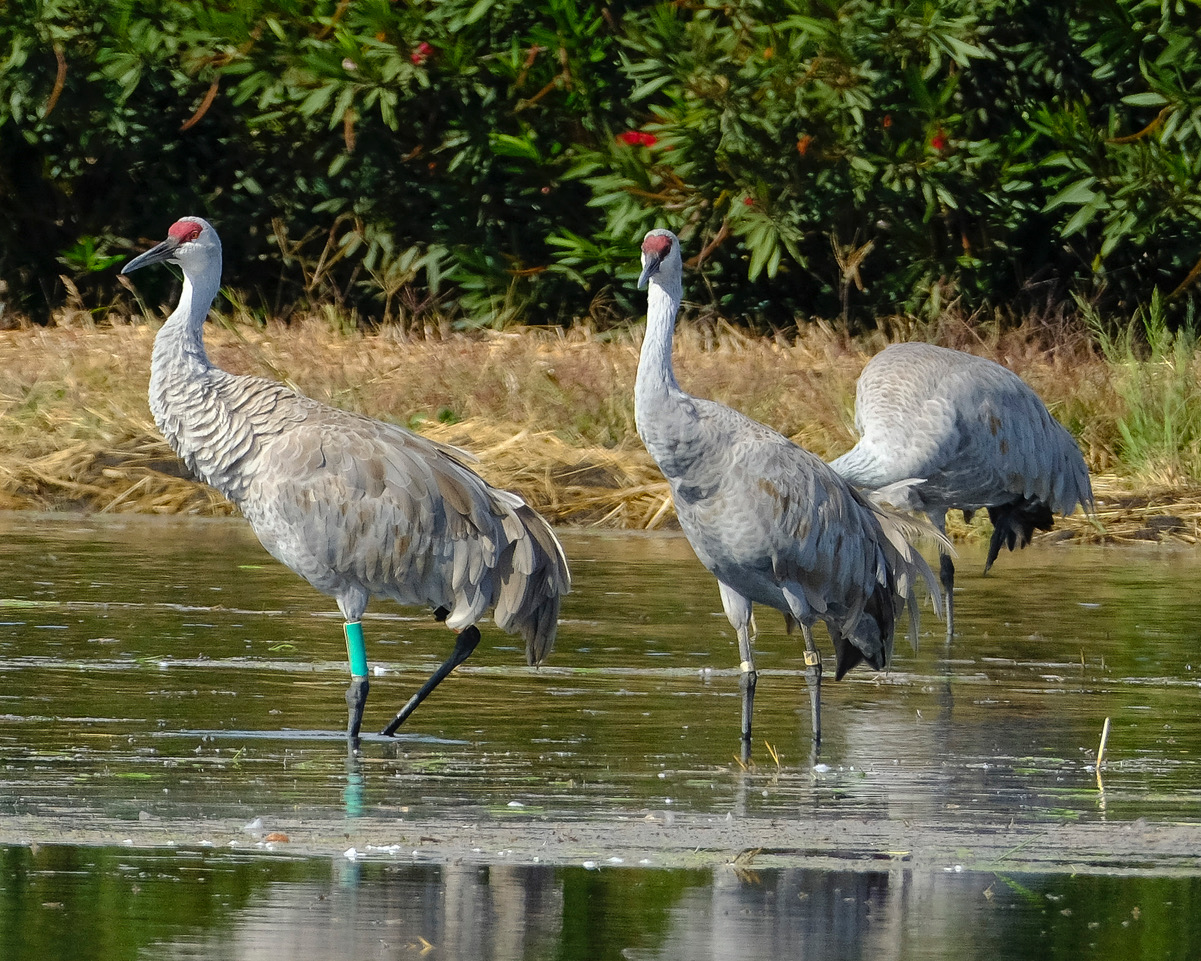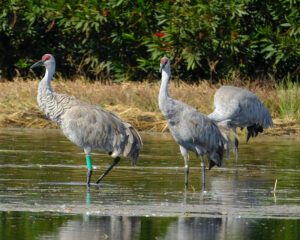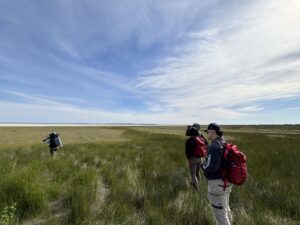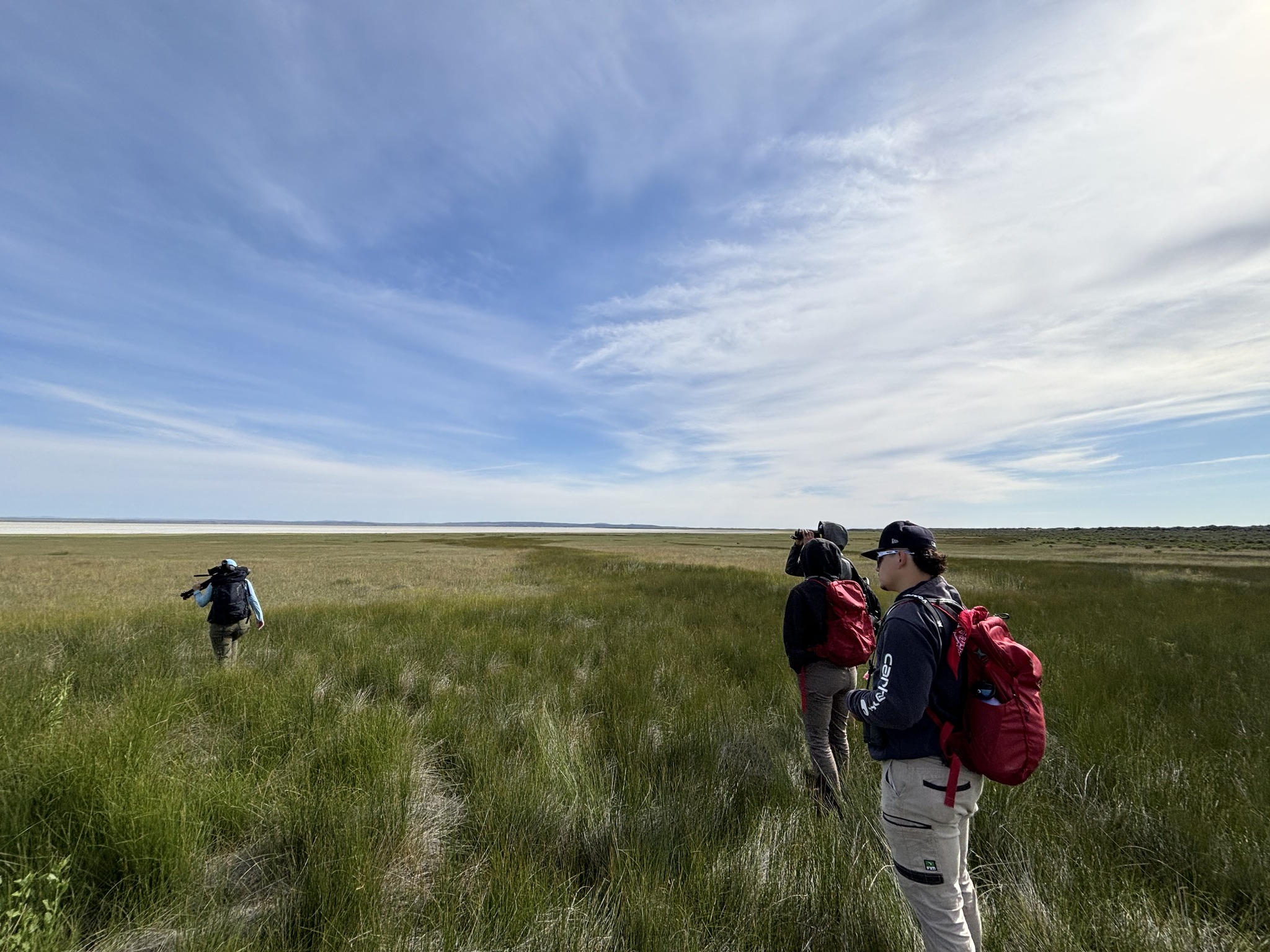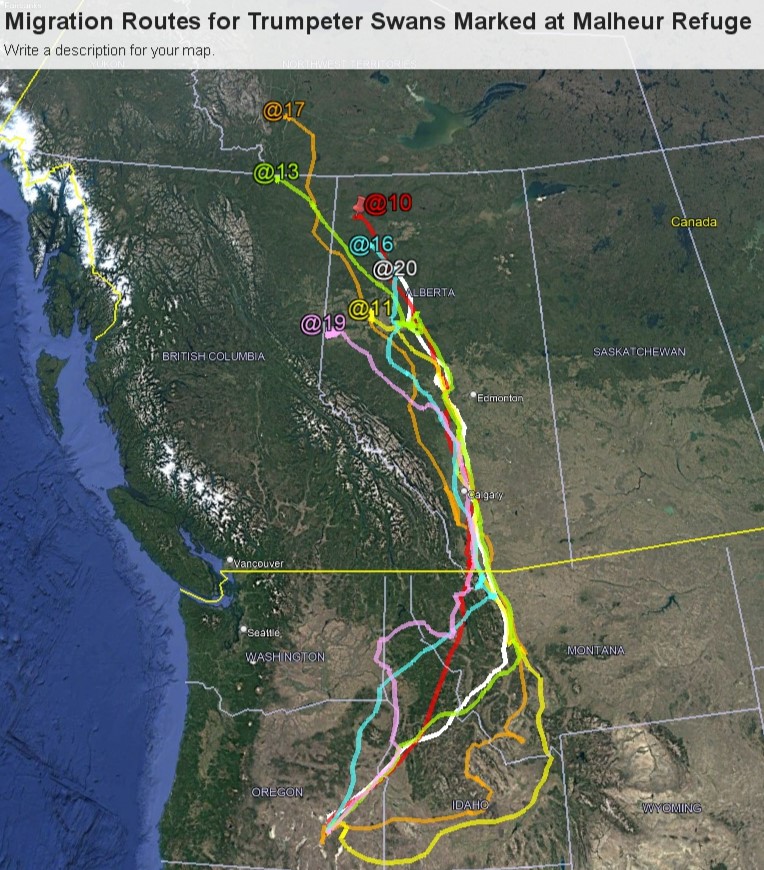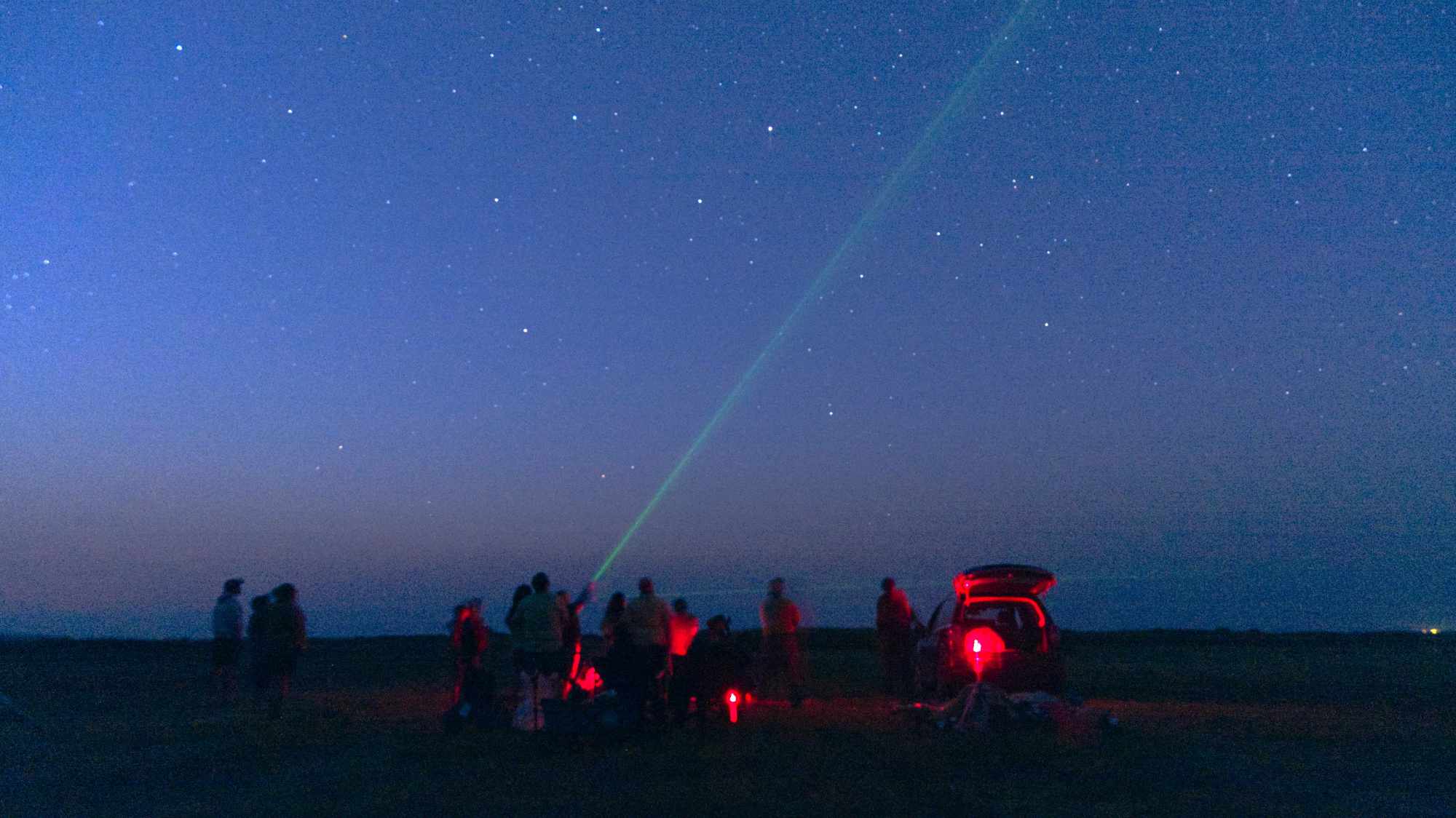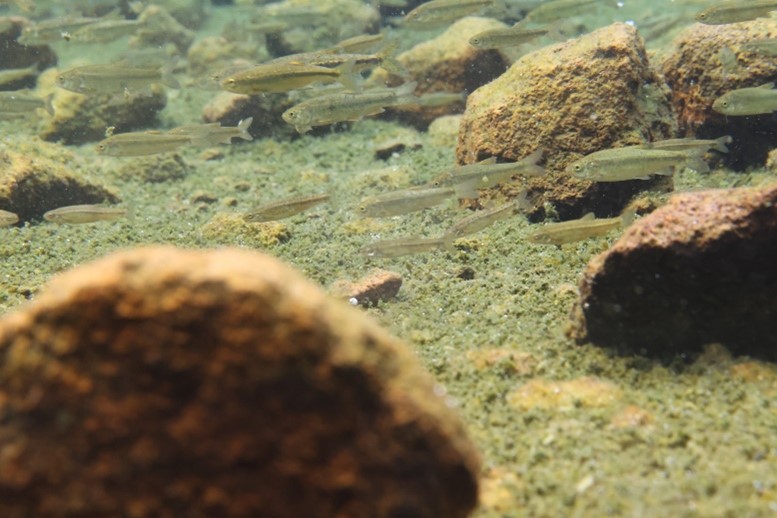Written by Gary Ivey PhD
Photo of ‘Oak and Sara’ by Bob Steelquist
Greater Sandhill Cranes begin returning to Malheur Refuge in mid-February. Some of the early arrivals are eager to get back to prevent other pairs from encroaching on their previously established territory. Crane pairs are very loyal to their nesting territories and marked pairs have been found in the same refuge field for many years.
I served as a Refuge Biologist at Malheur for 15 years and during that time, I captured and marked over 200 cranes at Malheur, after learning to be a craniac from my mentor, the late Carroll D. Littlefield (C.D). CD began studying cranes at Malheur for his Master’s in 1966 and he remained passionate about Malheur’s cranes his entire life. I am writing to tell stories about some of those marked cranes.
First, let me tell you about Sarge. Sarge was originally marked by CD in 1968. Back in those early days, cranes were banded with an aluminum numbered band and a taller metal band. He used colored flagging for individual identification. The flagging was short-lived and soon those cranes could not be identified individually. Luckily, CD recaptured Sarge in 1983. During those years we began making our own plastic-colored bands, and because our refuge budget was slim, we bought sheets of colored plastic, cut them to size, heated the flat sheets and curled them around the handle of a broomstick so we could use them on cranes’ legs. The last step involved hand engraving a symbol, number or letter on the bands for individual identification. Sarge received a 3-inch black band with sergeant stripes engraved on it.
Sarge and his unmarked mate nested west of the Center Patrol Road, about 100 yards north of East Buena Vista Pond. I saw him every year there in the 15 years I worked at the Refuge, though I never saw Sarge and his mate with fledged chicks. I also found him several times in the winter along Woodbridge Road, west of Lodi, California on Brack Tract which is the east edge of the Sacramento-San Joaquin Delta (hereafter, Delta). I always found him on the property called: “The Black Hole Gun Club.” He was last reported on his nesting territory at Malheur in 2002. So, Sarge was originally banded as an adult in 1968 of unknown age, but paired adults are usually at least 4-5 years old. If we assume he was 5 when originally captured and died after he was last reported, he was at least 39 years old.
Sweetie and Softie were captured on September 6, 1987 as an adult pair. They were named by CD. He named the female Sweetie because her white band had a heart engraved on it. I’m not sure why he chose Softie as the male’s name, but I think it is because he thought it was funny. This pair was found regularly nesting in the Little Sagebrush Field, about a mile west of the Center Patrol Road and Rattlesnake Butte. Like Sarge, they also wintered on Brack Tract and were reported using the South Isenberg Crane Reserve, each winter, through 2012 (25 years since marked).
Oak and Sara were named by my volunteers who helped me rocket net cranes. Sara was captured almost 27 years ago on Sept. 25, 1997, as an adult with a male that we thought was her original mate “Marco” in East Grain Camp Field, just east of the Blitzen River south of Diamond Lane. Oak was also captured in East Grain Camp Field, but a couple of weeks later, on Oct. 6, 1997. In 1998, Oak and Sara were hanging out as mates, so she may have just been dating Marco. This pair’s territory is in the Larson Field, which is east of the Center Patrol Road and just north of Diamond Lane. On April 24 last year I received a report of Oak being sighted by Lee Foster, Oregon Department of Fish and Wildlife District Wildlife Biologist for Harney County. Oak and Sara have been reported almost every year during winter in the same area as Sarge used, but a couple of miles east, near the South Isenberg Sandhill Crane Reserve.
These cranes live a long time and are very loyal to both their nesting territories on Malheur and their wintering sites. About half of the Malheur-marked cranes winter in the Delta, and most of the others winter in the Sacramento Valley rice country between Marysville and Chico. They are like people who migrate seasonally and referred to as “snowbirds”. They have a summer and winter home and travel between them, stopping at their favorite restaurants along the way.

